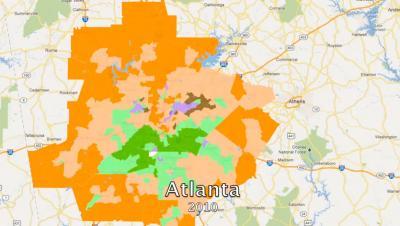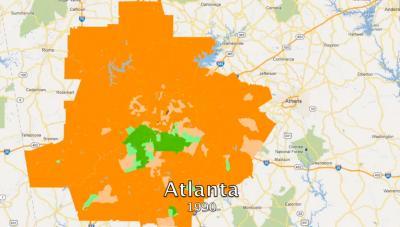As Wright explains in this accompanying video, his research evaluates neighborhoods' composition by examining the degree to which groups share residential space. This entails looking at census tracts, which are a unit of analysis the U.S. Census uses to define a neighborhood. After analyzing the data, he concluded that segregation has declined, as other scholars' research has suggested. However, Wright says his research shows that "we should be very cautious talking about the 21st century being the century of diversity or the end of a segregated century."
Wright says, "The trend we've seen is for predominantly white tracts to become more racially diverse. We've also seen an increase in the number of tracts that are Latino-dominated and undiverse, and a greater count of Asian-dominated tracts that are undiverse. And this is because of immigration. African Americans have a longer history of settlement in the United States. And while the number of low-diversity, African American neighborhoods has declined a little, it's nowhere near the same rate as low-diversity, white-dominated tracts. So old histories are getting rewritten in these metropolitan areas, but African Americans remain segregated."
Atlanta, as Wright discusses in the video, has undergone enormous demographic change over the last 20 years. In 1990, the city was populated predominantly by whites and African Americans. Of a total of 658 tracts, 398 were classified as low-diversity white-dominant and 112 were low-diversity black-dominated tracts. "Atlanta was archetypically white suburbs and an African American central city, something you would see in Detroit, Pittsburgh, or Cincinnati today," says Wright.

In a Dartmouth Now video interview, Professor Richard Wright says highly diverse neighborhoods are still rare and African American neighborhoods remain largely segregated.
(Photo Credit: Dartmouth College)
However, between 1990 and 2000 low-diversity white-dominant tracts declined from 54 percent of all tracts to 29 percent. From 2000 to 2010, these areas declined an additional 49 percent, from 238 to 116. The 116 remaining low-diversity white-dominant tracts are now just 17.6 percent of all tracts in Atlanta, compared to 1990 when that class of tract comprised 60 percent of all neighborhoods.
The number of low-diversity black-dominant tracts went from 112 in 1990 to 123 in 2000. By 2010, the number had dropped slightly to 115, but there were still more low-density black-dominant tracts in 2010 than in 1990. There were no Atlanta neighborhoods where Latinos were numerically dominant in 1990, but by 2010 there were 31. And just two tracts were classed as highly racially diverse in 1990, but by 2010 there were 17.
"It's clear from our research that we still have problems to do with segregation," says Wright. "We can celebrate diversity, we can find diverse neighborhoods and identify them, but we should be very cautious about celebrating the end of any form of segregation."

As shown in this 2010 map, Atlanta is now more diverse, with a growing Latino population (represented in purple above). However, the city still exhibits signs of racial segregation.
(Photo Credit: Mixedmetro.us)

Of the 53 metropolitan areas studied by Professor Wright, Atlanta has undergone some of the most significant demographic change over the last 20 years. The map above shows a predominately white (represented in orange above) and African American (represented in green above) population in 1990.
(Photo Credit: Mixedmetro.us)
Source: Dartmouth College